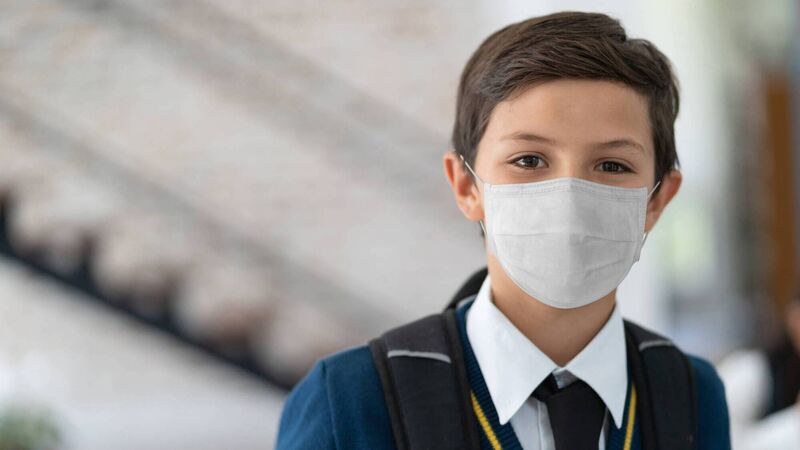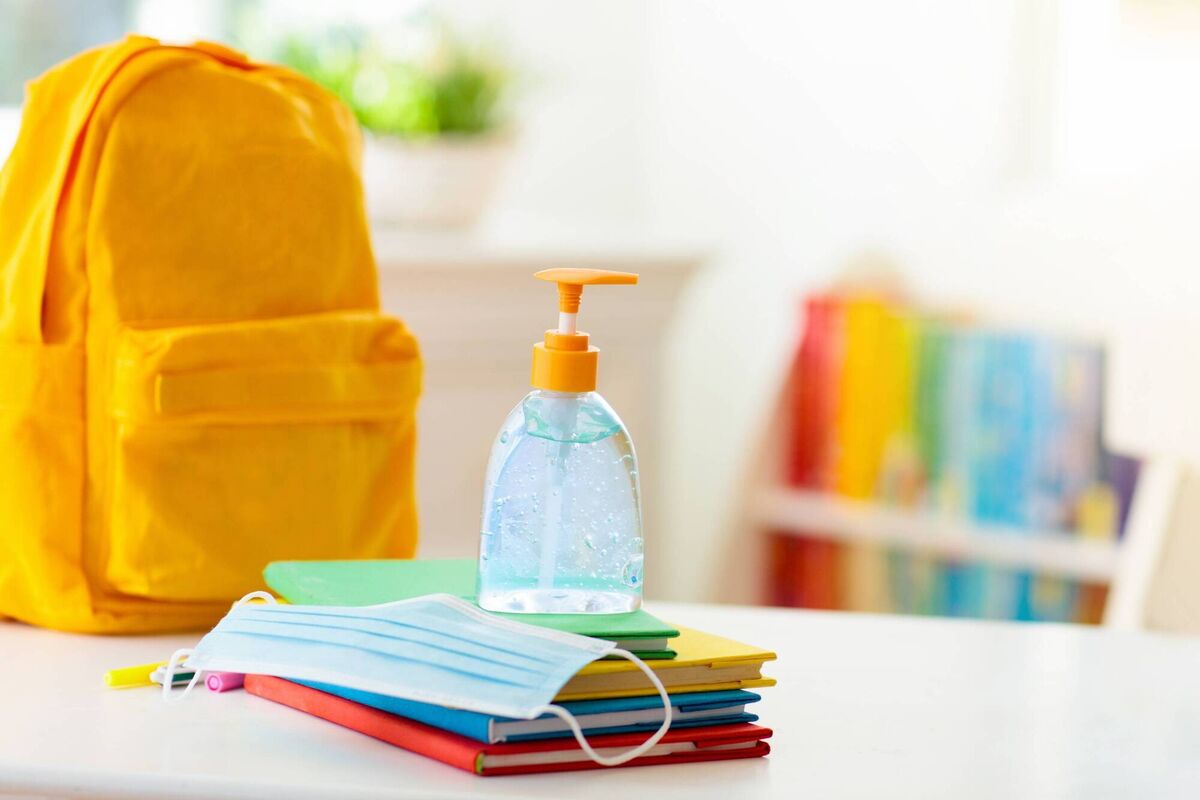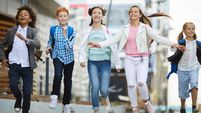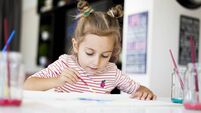Colman Noctor: Introduction of mask-wearing at primary school must be short term

Picture: iStock
Due to the rising number of infection rates amongst five- to 11-year-olds, NPHET has recommended cancelling all non-essential children’s indoor activities and the introduction of face coverings for primary school children from third class.
This proposal has sparked quite the reaction from parents. There are those who are opposed to the concept, saying they will keep their children at home rather than make them wear masks; others see the introduction of face coverings as a panacea, arguing this should have happened at the outset.
In August, I wrote a column where I shared my views on young children wearing masks. I suggested that if masks were necessary, their introduction would not be ‘cost neutral’ for children’s emotional and social development.
I was accused on social media of being prepared to ‘send teachers to their imminent death’, being ‘an anti-masker’, and one person said it would be my fault if their child ended up on a ventilator.
Others dismissed the possible impact of face coverings on child development and communication as ‘speculative’, stating that ‘all these predictions are nonsense, Covid is here now, and we have to act now’.
By reducing the discussion to ‘if you are not pro-masks, you are anti-masks’, we lose the opportunity to understand the complex issues involved.
Many will argue, ‘my six-year-old wears a mask all the time, and they are fine’, which may well be the case in the short term. But will the impact of wearing a face covering for an extended period during their core developmental period negatively impact children’s ability to communicate? The answer is, we do not know.
The concern is that the impact on younger children's social/emotional development will not be immediately visible and may be significantly camouflaged if mask-wearing is occurring in communities at the same time. Developmental disruption can take years to become visible or noticeable.
Some may dismiss the developmental needs of nine to 13-year-old’s compared to younger cohorts because speech and language have already begun to be developed. Still, this stage is crucially important from a social and emotional perspective.
The ability to interpret nuance and prepare yourself for the social and emotional complexities of adolescence and secondary school is vital. It is at this point where the beginnings of puberty and the emotional awakening of difference occurs. This transitional phase is all about subtlety and nuance, and it is often when many children’s mental health problems emerge as they struggle to navigate this changing terrain. We need to be mindful of the cost of expecting children to navigate this tricky life stage with anything that impedes their ability to communicate.
Despite many years studying child development, I cannot claim with complete certainty that masks will negatively affect children’s development, but neither can those who claim they will not. Emotional and social development is not an exact science. The study of the human psyche is a science of subjectivity. My caution may indeed be hypothetical, but the counter certainty that mask usage will have ‘no’ negative consequences is equally so.
There’s no long-term research on the psychological impact of covering the faces of whole communities of children for extended periods - all the measures we introduce are part of an experiment. The past 22 months have been the greatest social and emotional experiment of our time. With an experiment that involves thousands of children’s social and emotional development, we must consider all the positive and potential negative possibilities.

I believe children will have a mixed response when it comes to mask-wearing. However, most will manage the mechanics over time, except those with additional needs or sensory issues. These children need to be considered when introducing any mandatory measures.
Given the high transmission rates, it is understandable that something needs to be done. If mask-wearing in primary schools is the most effective way to do this, I will trust and encourage everyone to follow the public health advice. However, I would plead with decision-makers to make this intervention a short-term measure to be reviewed at regular intervals.
We know the longer a measure is in place, the more likely entrenched habits will form. The habits of concern are already visible in the secondary school pupils who report that mask-wearing has changed the school environment.
Some have described a tendency to engage in social avoidance and others are experiencing a fractured relationship with school and education since the introduction of masks in 2020. Those with underlying issues like dyspraxia, dyslexia or auditory processing disorder have found communication in the school environment particularly challenging.
Since the first lockdown in March 2020, everyone’s mental health has been affected. The vulnerable population is undoubtedly the elderly and those with underlying conditions, but the vulnerable population is children when it comes to restrictions. Children have suffered hugely, from the overwhelmed 17-year-old who went into lockdown as a 15-year-old, to the 13-year-old for whom his drama group was his tribe, to the eight-year-old who has spent a quarter of their life in a disrupted world.
I am also conscious of how the broader narrative of seeing young children as ‘vectors’ affects their self-concept and self-value. We all see ourselves through the eyes of the other, and viewing children as ‘the great unvaccinated’ is undoubtedly impacting the way they see the world and, more importantly, how they see themselves.
The impact of the pandemic on children is undeniable. Pre-pandemic, I would get three to five queries a week seeking mental health support for children; over the past 14 months, I've received more than 30 queries a week. Interestingly, these requests have steadily increased over time, suggesting that the emotional impact of the restrictions has been cumulative.
I fully support all public health measures to protect adults and children. If mask-wearing is necessary for schools to stay open, then it is a better option than school closures, but it must be vigilantly monitored and short-term.
The introduction of any measure that may have a detrimental impact on children’s social and emotional development needs to be discussed and thought out in a sensible and measured way. We need to give each other the space and permission to do this.










